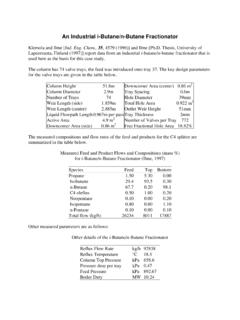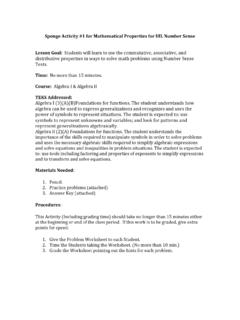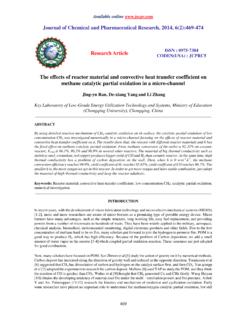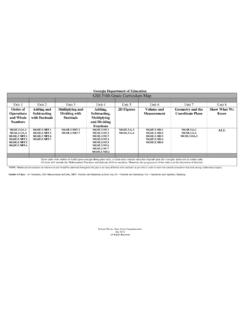Transcription of Math: It s Elementary! - GAGC
1 math : It's elementary ! Gail Fiddyment, Gifted Teacher Clarke County School District, Athens, GA. Objectives for today: Strategies and tools used to develop number sense and place value, including: number talks non-algorithmic problem-solving tape diagrams area models number disks drawing and modeling Ways to enrich and extend math for gifted students Communicating with parents Resources: books and websites number talks The goal is for children not to be bound to a rigid procedure such as an to look to the numbers to decide which strategy to use.. number talks Goals: Reason, make sense, and construct strategies built upon numerical relationships What makes a number talk? * Mental math * Multiple strategies * Multiple opportunities to use strategies Focus: Accuracy, efficiency, flexibility Planning number talks 1. Designate a location in your classroom for number talks. 2. Establish a signal to allow for wait time.
2 *Students need to actually think through their answers instead of saying the first thing that pops into their minds. 3. Accept, respect, and consider all answers. * Several students share their thinking while teacher records. *Students must express their ideas in words clearly enough for teacher can record their strategies on the board. Ask students if you are recording it accurately. 4. Encourage student communication. During number Talks 1. Solve the problem in our heads. 2. Think about HOW we solved it. 3. Look for patterns in the problems or answers. 4. Are ready to share strategies and explain our thinking. 5. Listen to other mathematicians' thinking and are ready to respond: I agree with_____because_____. I don't understand_____. Can you explain it again? I disagree with_____ because_____. How did you decide to _____? Goals for grades K-2. (1) Developing number sense, (2) developing fluency with small numbers, (3) subitizing, and (4) making tens.
3 Kindergarten * Goal: counting, building fluency, developing one-to-one correspondence, and conservation of numbers. * Visual and spatial arrangements of geometric models: rekenrek, subitizing dot cards, ten frames First * Goal: build fluency with numbers and develop addition strategies * Continue to utilize the tools and models of Kindergarten but focus on reasoning with numbers. Second * Goal: elicit and foster specific computation strategies, addition and subtraction. * Later in year, introduce multiplication with visual arrays. Goals for grades 3-5. 1) number sense, (2) place value, (3) fluency, (4) properties, and (5). connecting mathematical ideas. Activities for number sense: estimation prior to solving, determine reasonableness of answer, conservation of number activities, one-to- one correspondence Activities for number fluency: number families, compose and decompose numbers, flexible and efficient problem solving, memorization of basic facts Six-step format for each number talk (Same format, different problems and models).
4 1. Teacher presents the problem (vertically). 2. Students figure out the answer (provide wait time; students use a quiet signal to indicate strategies). 3. Students share their answers and teacher records them on the board. 4. Students share their thinking and teacher records on board. 5. The class agrees on the "real" answer for the problem. 6. The steps are repeated for additional problems. 5 x 16. 15 x 16. 14 x 16. 14 x 17. 13 x 17. 5x8. 7x8. x 8 = 96. x 8 = 24. 120 8. number talks-books Parrish, S. (2010). number Talks: Helping children build mental math and computation strategies. Sausalito, CA: math Solutions. Fosnot, , & Uttenbogaard, W. (2008). Minilessons for early addition and subtraction. Portsmouth, NH: Firsthand. Fosnot, , & Uttenbogaard, W. (2008). Minilessons for extending addition and subtraction. Portsmouth, NH: Firsthand. Fosnot, , & Uttenbogaard, W. (2008). Minilessons for early multiplication and division.
5 Portsmouth, NH: Firsthand. Fosnot, , & Uttenbogaard, W. (2007). Minilessons for extending multiplication and division. Portsmouth, NH: Firsthand. Imm, , Fosnot, , & Uttenbogaard, W. (2007). Minilessons for operations with fractions, decimals, and percents. Portsmouth, NH: Firsthand. number talks-websites Dot cards, Rekenreks, ten frames 1st grade number talks 2nd grade number talks 3-5 grades number talks +Talks 20 number %20 Talks%20 Build%20 Numerical% (from number Talks book). ). +Talks enriching and extending math for gifted math students Open-ended questions Constructivist Exploratory Problem-solving Non-algorithmic Increase complexity of problem enriching and extending math for gifted students Common Core Progressions Mathwire problem-solving Mathematics Performance Task Bank grades k-2. Mathematics Performance Task Bank grades 3-5. Delaware City Schools 5th Grade Enriched math (grades 3 and 4 accessible from this page).
6 number lines Frogs at a frog-jumping contest are given three jumps to reach the finish line. If a frog jumps halfway on its first jump, and one-third of the way to the mark on its second jump, how far must the frog jump on the third jump to reach the finish line? number lines Compare these fractions: 3/7, , 5/9. Which fraction is closest to ? students develop own strategies, including using multiple number lines non-algorithmic problem-solving Focus on problems that cannot be solved simply by using an algorithm. Meets math Practice Standards: MP1. Make sense of problems and persevere in solving them. MP7. Look for and make use of structure. non-algorithmic problem-solving When writing problems/questions, consider: Familiar context Action Personalize Multiple paths to solution May be more than one acceptable answer Discourse of students' strategies non-algorithmic problem-solving Instead of finding area of two numbers: Puppy fence (3rd grade).
7 Instead of multiplying or dividing two numbers: Juice boxes (3rd grade). Instead of adding two fractions: Dividing cakes (4th grade). Instead of dividing a fraction by a whole number : Aunt Sally's salad dressing (5th grade). Instead of dividing a whole number by a fraction: Lela's brownies (5th grade). Instead of dividing with mixed numbers: Landon's medicine (5th grade). Puppy fence Your dad needs your help to put up a fence for your new puppy. You have 48 feet of fencing. The fence will be in the shape of a rectangle, and the fence must go all the way around the rectangle. 1. Find the lengths of the sides of at least 4 different fences that you could make using all 48 feet of fencing. 2. Find the area of your fences in part 1. Are all the areas the same? 3. What do you think is the largest area you can make with this amount of fencing? Explain your answer. Ms. Fiddyment brought 15 little cakes for her students to share.
8 If there are 9 students and they all want the same amount, how much cake can each student have? Draw a picture and explain your thinking. adapted from Extending Children's Mathematics, Empson & Levi Aunt Sally's Salad Dressing Recipe * cup olive oil * cup balsamic vinegar * pinch of salt * pinch of herbs Makes 12 servings adapted from illustrative mathematics Lela made 6 pans of brownies. She wants to give each friend 3/8 of the pan. How many friends can get some brownie? Draw a picture and write the equation that matches this problem. ( ). Landon is sick and needs to take medicine. Each dose of medicine is . tsp. There are 5 tsp. in the bottle. How many doses of medicine are in the bottle? Draw a model and explain your thinking. reasoning problems Develops number sense and place value concepts Opening/Activating strategies: Multiplying three numbers (3rd grade). Division comparison (4th grade). Decimals thinking (4th grade).
9 Place value and properties (5th grade). Relating multiplication and division-fractions (5th grade). Joey multiplied three numbers together and got 24. What three numbers could he have multiplied? What strategy did you use to figure out the numbers? Determine if these equations are true or false. Defend your answer using your knowledge of place value and the commutative, associative, and/or distributive properties. a. 6 tens = 2 tens 3 tens b. 44 20 10 = 440 2. c. 86 ones 90 hundreds = 86 ones 900 tens d. 64 8 100 = 640 8 10. e. 57 2 10 10 10 = 570 2 10 (from ). You have the decimals , , , , and Which decimal is closest to 6? How do you know? Be prepared to defend your answer. You have the decimals , , , , and Which decimal is closest to 7 3/5? How do you know? Be prepared to defend your answer. Make a conjecture: How do I use multiplication to divide? Think about the relationship between multiplication and division.
10 How can I show the same equation with multiplication and division? Ex: __ = b . Note: b must be the same number x __ = b in both equations. Why does this work? Show other examples of this principle. tape diagrams Some problems are easier to solve by drawing than by using traditional methods! tape diagrams Lena has some eggs in the refrigerator. She takes out of the eggs to make waffles and scrambled eggs. Lena uses . of the eggs she took out to make waffles. What fraction of the total number of eggs does Lena use to make waffles? tape diagrams Now let's try one! One-fourth of the fish in a bowl are guppies. The same number of guppies as originally were in the bowl are added. What fraction of the bowl is now guppies? The Miami School Problem-solving and Singapore math area models multiplication and division used for whole numbers, mixed numbers, decimals factors are outside, product is inside * if you know two of the numbers, you can find the third area models arrays area models with blocks area models with numbers 4.








